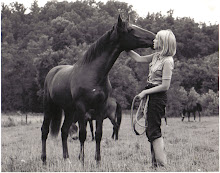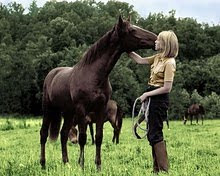For those of you who like a nice, traditional St. Patrick's Day meal, I have just the ticket for you.
I'm making a corned beef brisket, along with a potato dish. And I have two potato dishes from which you can choose: either colcannon, which is potatoes and cabbage, or cheddar scalloped potatoes.
As for the corned beef, this preparation is the best I've ever had. You're going to love it.
By the way, if you can find a better corned beef than this, I want the recipe. Please!
I’ll be
making a special spicy rub for the meat and a glaze to finish it off.
The meat will be taking a three-hour sauna,
during which time, I’ll change the liquid twice.
Changing the liquid during braising allows
you to keep the flavor pumping back into the meat and lose some of the
saltiness.
First, a little information about the brisket and the
cooking method:
The brisket is the chest muscle of the cow and, since it
gets a good workout from walking around and standing, is a tough but flavorful cut. Lazier muscles, say a sirloin or tenderloin,
are much more tender.
A tough cut needs
to be cooked differently from a tender cut.
The method of cooking I’m using is called braising and it involves moist
heat. Tough cuts of meat, coming from
areas of the animal that are continually exercised, have greater amounts of
collagen than tender cuts. Collagen is a
connective tissue which holds the muscle fibers together and braising helps
break down the tough collagen. In
braising, the meat is cooked in a liquid and covered. This allows the collagen to dissolve into
gelatin, allowing the meat fibers to separate easier, thus producing a tender
piece of meat.
When meat cooks, the fibers shrink as water evaporates and
fat melts out. You’re losing both moisture
and flavor, but the heat is dissolving the tough connective tissue. With a tough cut of meat like brisket, one
must find a cooking balance – long enough to break down the fibers and
collagen, but not so long that the meat dries out. This is done with a method like braising, a
technique in which tough cuts are gently simmered in a deep pan with a little
liquid. The pan is covered, creating a
steam bath. Moisture surrounds the meat,
but it’s much gentler than boiling.
Boiling occurs at 212°. In braising,
the temperature is lower, about 185°. This allows you to braise the meat longer because it doesn’t cook as quickly,
giving it more time to tenderize.
Originally, corned beef was boiled to leech out some of the
saltiness. But the salt along with some
flavor ended up in the water. With
braising, saltiness is released into the liquid, but the fibers are relaxed
enough to reabsorb the liquid and reabsorb flavor. As I said, I change the water twice. By doing this, flavor is retained but I lose
some of the saltiness
Now that you know how to cook a brisket, what cut do you buy?
The butcher receives the whole brisket from meat processors
and trims the briskets into point cuts and flat cuts. The point cut is thicker and smaller. It’s marbled with more fat and connective
tissue than the flat cut. There’s a lot of
flavor here, but not as much meat since there’s a big slab of fat going through
the middle. The flat cut is long and thin with a layer of fat on the bottom
where you can’t see it. Look for the
flat cut, not the point cut.

Corned Beef Brisket
I usually get a 6-7 pound piece of meat. Remember, it will shrink
quite a bit during the cooking process. Remove the layer of fat off a flat cut brisket
and trim off any other fat pieces. Rinse
the meat under cold water to wash off any curing salts. Pat dry with paper towels.
For the baking dish, you can use a clay pot, a Dutch oven, or simply a glass baking dish with foil wrapped over top to get a tight seal.
Now for the rub:
Ingredients for the
rub:
4 TB brown sugar
1 tsp freshly ground black pepper
1 tsp ground cloves
2 tsp dry mustard
1 tsp ground ginger
1 tsp freshly ground nutmeg
½ tsp cayenne pepper
Mix all ingredients together.
Sprinkle the spice mixture/rub over the meat and massage it
in.
All over. Top, bottom, sides.
Place spice-rubbed brisket into your baking dish and pour 2
cups cold water down the side of the pan, being careful not to wash off any of
the rub. Cover tightly and bake at 350° for 1
hour.
 After one hour, remove from oven, and pour out braising
liquid. Pour another 2 cups of cold
water down the side of the pan. (If you’re using a glass baking dish, let it
cool a bit before you pour the cold water in it.) Cover and bake another hour.
After one hour, remove from oven, and pour out braising
liquid. Pour another 2 cups of cold
water down the side of the pan. (If you’re using a glass baking dish, let it
cool a bit before you pour the cold water in it.) Cover and bake another hour.
After the second hour, remove from oven, pour out liquid,
and add two more cups of water down the side of the pan. Return to oven for the final (third) hour of
baking. Notice: The brisket will have noticeably shrunk. This is normal.
After the third hour, remove from oven, pour off liquid, and
increase oven temperature to 450°.
Notice how much shrinkage there is.
Now, prepare the glaze:
½ cup brown sugar, packed
4 TB soy sauce
2 TB Dijon mustard
1 tsp cayenne pepper
1 tsp dry mustard
1 tsp ground ginger
Mix all ingredients and brush the sweet-hot glaze over the
corned beef.
Evenly combine glaze ingredients.
Spoon glaze over brisket.
Return to 450° oven and
bake for 15 more minutes.
Let meat rest 10 minutes before slicing.
The caramelized coating is a perfect foil against the spice and
salt.
Try not to pick!
Wait for the taters.
I'm giving you a choice: you can go with colcannon or cheesy scalloped potatoes.
First, the colcannon.
Colcannon
½ small cabbage, shredded
2 medium potatoes, diced
½ large onion, chopped
2 TB unsalted butter, melted
½ cup heavy cream
Kosher salt and freshly ground pepper, to taste
6 pieces bacon, fried and crumbled
Fresh parsley
Sliced scallions
Salt and freshly ground pepper, to taste.
Shred cabbage. Drop
into boiling salted water. Reduce to
simmer. Cover and cook until
tender. About 10 minutes. Drain cabbage, cover, and keep warm. Reserve the cooking liquid for the potatoes.
Peel potatoes if
desired. I don’t bother since I like the peel. Dice the potatoes and cook until
tender.
While the potatoes are cooking, combine the chopped onions
with the heavy cream. Bring to a boil.
Turn off heat and let steep for 15 minutes.
When potatoes are tender, drain, then mash. Add the cream and onion mixture to the
potatoes, mashing, and then stir in the cabbage. Season to taste.
When plating the colcannon, make a small well in the center
and pour in some melted butter. Add the
bacon crumbles and sprinkle scallions and parsley over top. You can also add a few
shamrock leaves. They’re edible and have
a delicate citrus flavor.
Now, for the scalloped potatoes:
Cheesy Scalloped Potatoes
2-3 potatoes, sliced about 1/4" thick
vegetable broth
heavy cream
kosher salt
freshly ground pepper
cheddar cheese, grated
Combine potatoes and equal amounts broth and cream to cover in medium saucepan. Bring to a simmer over medium heat. Cover, reduce heat, and cook, stirring occasionally, until potatoes are very tender. Remove from heat. Season to taste with salt and pepper and stir in 1/2 cup or more grated cheddar. Transfer potato mixture to a baking dish and spread evenly. Sprinkle with more cheddar cheese (1/2 cup or more). Bake at 375° until bubbling and top is golden brown.
And there ya go!
Enjoy!
For corned beef leftovers, there's nothing quite like corned beef on rye.
I made my own rye loaves which were pretty good, but I think I can do better, so I didn't offer up the recipe. So, go get a decent rye loaf from the bakery.
Butter and toast the rye slices.
Then I put a slice of Swiss on one of the rye slices and ran that under the broiler.
Add some thinly sliced corned beef.

Give it a schmear of coarse grained mustard.
Add some onion slices and some pepperoncini.
And some chips.
And you got yourself a sammich!
If you'd like to copy and paste directions for the corned beef, here they are:
Corned Beef Brisket
I usually get a 6-7 pound piece of meat. It will shrink
quite a bit during the cooking process. Remove the layer of fat off a flat cut brisket
and trim off any other fat pieces. Rinse
the meat under cold water to wash off any curing salts. Pat dry with paper towels.
Ingredients for the
rub:
4 TB brown sugar
1 tsp freshly ground black pepper
1 tsp ground cloves
2 tsp dry mustard
1 tsp ground ginger
1 tsp freshly ground nutmeg
½ tsp cayenne pepper
Mix all ingredients together.
Sprinkle the spice mixture/rub over the meat and massage it
in.
Heat oven to 350°.
You could use a Dutch
oven, clay pot, or any baking dish that you can cover and get a tight seal.
Place spice-rubbed brisket into your baking dish and pour 2
cups cold water down the side of the pan, being careful not to wash off any of
the rub. Cover tightly and bake for 1
hour.
After one hour, remove from oven, and pour out braising
liquid. Pour another 2 cups of cold
water down the side of the pan. (If you’re using a glass baking dish, let it
cool a bit before you pour the cold water in it.) Cover and bake another hour.
After the second hour, remove from oven, pour out liquid,
and add two more cups of water down the side of the pan. Return to oven for the final (third) hour of
baking. Notice: The brisket will have noticeably shrunk. This is normal.
After the third hour, remove from oven, pour off liquid, and
increase oven temperature to 450°.
Prepare the glaze:
½ cup brown sugar, packed
4 TB soy sauce
2 TB Dijon mustard
1 tsp cayenne pepper
1 tsp dry mustard
1 tsp ground ginger
Mix all ingredients and brush the sweet-hot glaze over the
corned beef. Return to 450° oven and
bake for 15 more minutes. You end up
with a lovely caramelized coating that’s a perfect foil against the spice and
salt.
Let meat rest 10 minutes before slicing.






























































